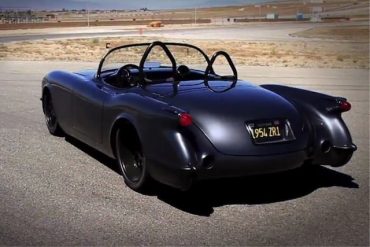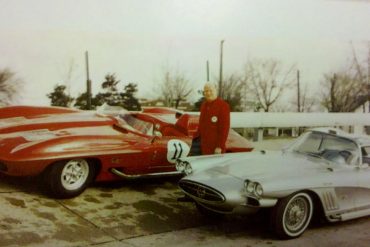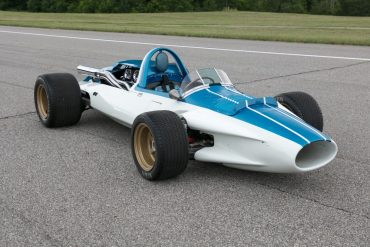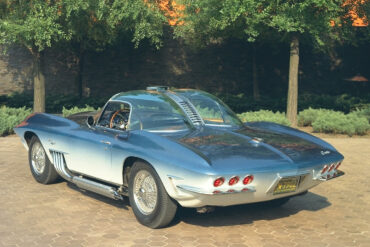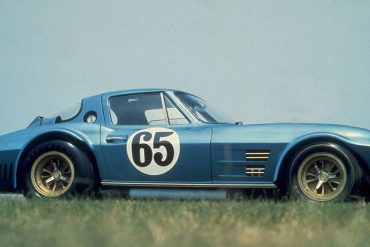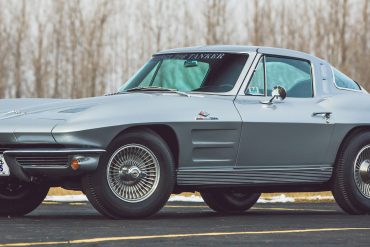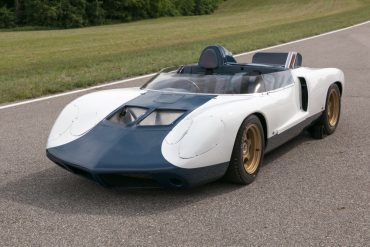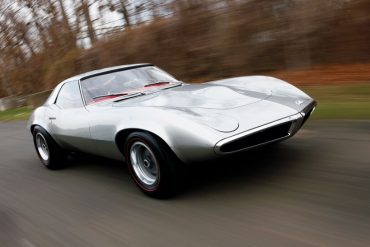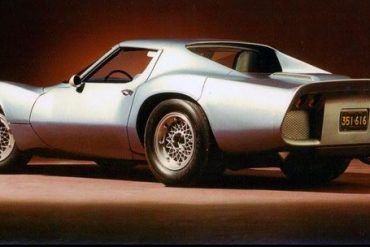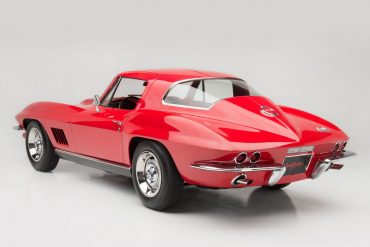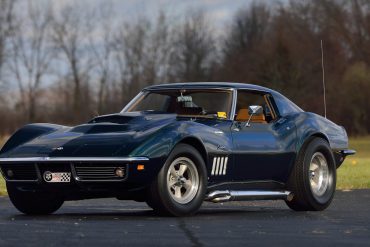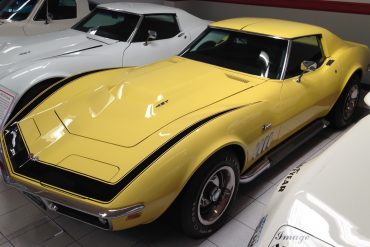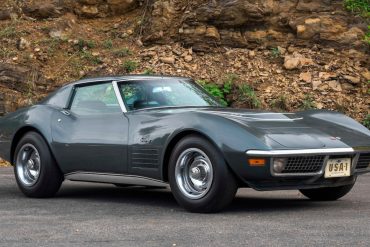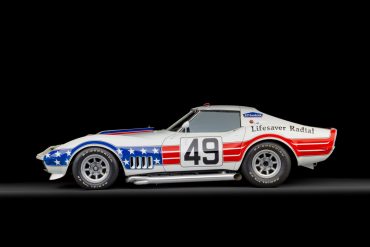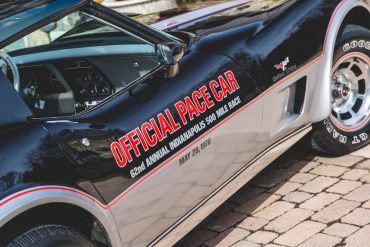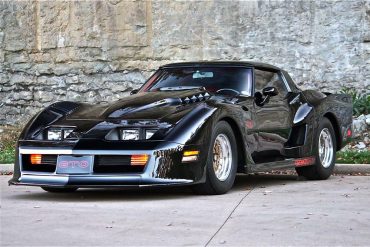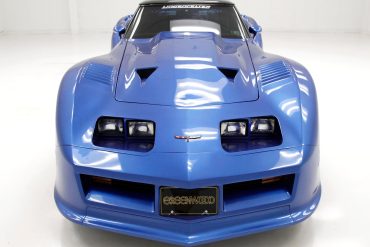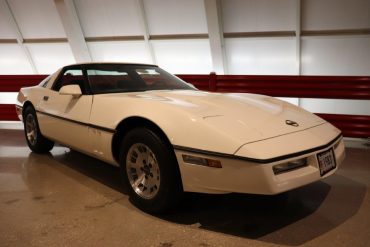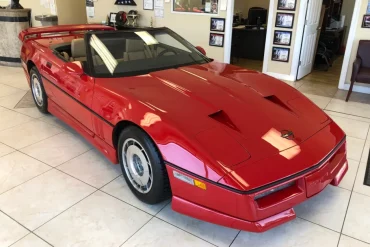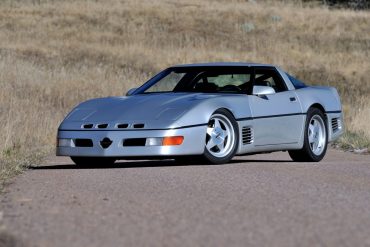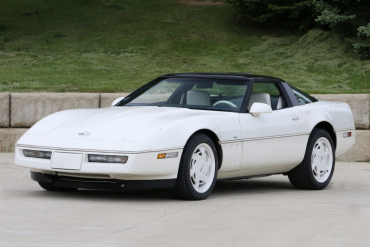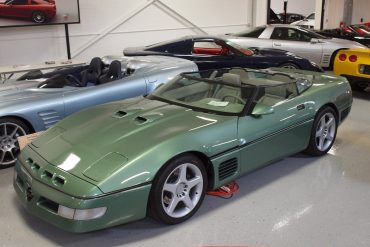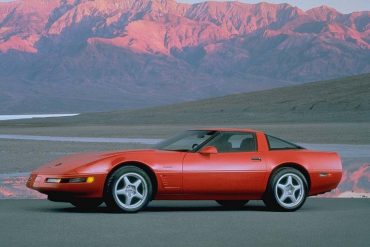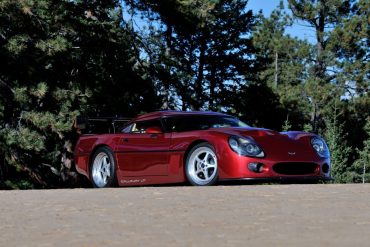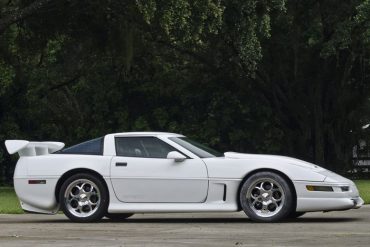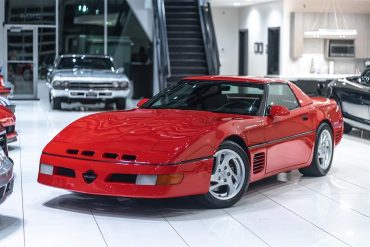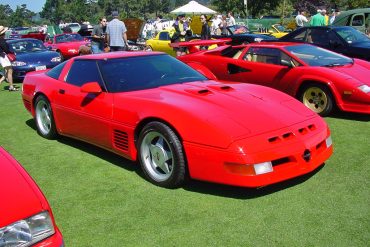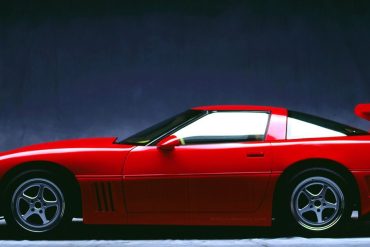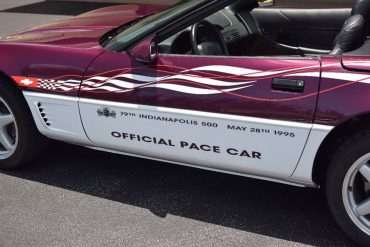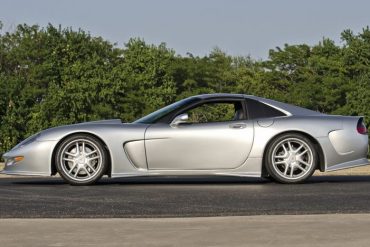Timeless Kustoms Breathes New Life into a Classic 1954 Corvette When introduced in 1953, the original Corvette was celebrated by...
Designed and built under the personal supervision of Bill Mitchell, the wild-looking XP-700 used many regular Corvette components (frame, chassis parts and engine). Bill Mitchell had a lot of “customs” built for himself. This XP-700 previewed the new tail of the upcoming 1961 Corvette.
The “CERV-1” (Chevrolet Engineering Research Vehicle) was developed as a research tool for that company’s continuous investigations into automotive ride and handling phenomena under the most realistic conditions. The car was built at the Chevrolet Engineering Center at Warren, Michigan in a special project headed by Mr. Zora Arkus-Duntov, Chevrolet Staff Engineer.
The XP-755 was designed and the prototype was built in the beginning of 1961. Bill Mitchell was very excited about the double-bubble roof, the side exhausts and rear. It is equipped with a single four-barrel carburetor that produces upwards of 425 horsepower. The Corvette XP-755 Concept had a streamlined design, pointed snout and outlandishly future looking elements everywhere. The 1961 Mako Shark I (XP-755) was an early concept.
Some of the iconic American sports car’s earliest forays into racing were snuffed out before they ever truly began. The 1963 Corvette Grand Sport, a Zora Arkus-Duntov designed rendition, of the C2 was staged for track domination, both at home and abroad.
The first Z06 was actually an option package first offered with the 1963 Corvette. The package was developed by Corvette's legendary lead engineer and racing advocate Z0ra Arkus-Duntov. The Z06 option was designed to allow consumers to bolster the 1963 "Split-Window" Corvettes performance and handling capabilities for use on the race track. Selecting regular production option (RPO) Z06 when ordering a Corvette resulted in a car equipped with some tasty options.
The CERV II was entirely Zora’s car. The CERV II was conceived early in 1962 and developed over the next year, after the GS program was squashed. The car was built under Zora's direction between 1963-'64. Zora had it in mind to develop a separate line of racing Corvettes but the idea got terminated by management.
When first introduced to the world by Pontiac in 1964, the car showed so much promise that Chevrolet (allegedly) put a swift end to its development to prevent its production from hindering the sales of the Corvette. Afterall, with the introduction of the 1963 Split-Window Corvette, Chevy was finally seeing an increase in sales, something lacking for most of the first-gen.
The XP-819 Corvette prototype was introduced in 1964 by Frank WInchell and Larry Shinoda as the first, experimental, rear-engine Corvette coupe. The XP-819 was developed in the mid-1960's as an engineering exercise to determine if a rear-engine platform was right for the Corvette program. During that time, Chevrolet was still under a racing ban.
The L88 was a special option package developed under the direction of Zora Arkus-Duntov, director of GM’s performance division. First introduced in 1967, the L88 Corvette featured a highly modified version of Chevy’s 427-cubic-inch V-8 engine. Although this engine received a factory horsepower rating of 435, actual engine output was somewhere between 540 and 580 horsepower, giving the “stock” L88 enough power to run a quarter-mile in the high-11-second range!
Various upgrade packages were offered by Motion Industries, for the Chevrolet models included within the Baldwin Corvette partnership. The most prominent of these packages included the SS (425 HP) and Phase III (500+ HP) offerings. These cars not only came with a performance promise, but a guarantee to back it up. All Phase III cars came with a personal guarantee.
In 1969, Chevrolet changed the perception of Corvette forever by introducing the ultra-powerful ZL-1 Corvette with a 427 CI engine producing 585 horsepower! The 1969 ZL-1 Corvette came equipped with an entirely new big-block engine option that produced more horsepower than any Corvette that had come before it. Any Corvette, when ordered with RPO ZL1, came fitted with an all-aluminum 427 C.I. engine that featured a dry-sump oil system and which weight approximately 100 pounds less.
Did you know that the earliest ZR1 Corvettes came into existence long before any of these later iterations? If not, then take a few minutes to acquaint yourself with one the rarest small-block production Corvettes of all time - the 1970-1972 Corvette ZR1. From 1970 to 1972, Chevrolet offered the ZR1 Special Engine Package, which featured a small-block LT1 engine.
When one of his cars was severely damaged in 1972, John Greenwood converted his 1969 L88 Convertible into a formidable race car. Included as the formidable ZL1 engine with 750 bhp on tap. Other modifications included a rear spoiler, quick replacement radiator and camber adjusters. At Le Mans, this car set the GT-class record for top speed down the Le Mans straight with 215 mph.
1978 was significant because it marked the cars 25th anniversary of production. Recognizing the achievement of manufacturing a car for a quarter-century, Chevrolet commemorated this accomplishment by introducing two special-edition Corvette that year. The first of these was known as the "Silver Anniversary" edition Corvette. It featured a two-tone silver over gray exterior with special pin-striping and special "25th Anniversary" badging.
The major differences between the 1980 and 1982 Daytona and the 1981 GTO are the hood, the tops of the rear fenders, and the rear spoiler/bumper cover. The Daytona had an elaborate, short vertical fin on top of the rear fender that turned several turns “in and back,” flowing to the wide, long, table-like rear spoiler. The GTO’s rear fenders pontoons are the same as.
What you see before you is a 1982 Chevrolet Corvette that has been fitted with a rare Greenwood Daytona body kit. The most extreme of the Greenwood brothers' kits, the Daytona body kit is a highly sought-after modification that was developed by race-winning specialists Burt and John Greenwood.
Within the National Corvette Museum's Skydome sits the only remaining 1983 Corvette; a car best characterized as a survivor, in every sense of the word. According to the Macmillan Dictionary, a survivor is, "someone or something that still exists after every other member of a group has died or been destroyed." This as it may, the 1983 Corvette lives up to this title.
Offered from 1987 to 1991, the RPO-B2K upgrade was available from any Chevrolet dealer and also Callaway’s first major Corvette tuning program. Together, GM and Callaway made the upgrade package a Regular Production Order (RPO) which was the first time GM had outsourced such an option to a specialist manufacturer. It even had a factory back warranty. As the C4 updated, so did Callway’s program and by 1988, the B2K was pushing 382 bhp and 562 ft. lbs. of torque.
This Sledgehammer reached 254.76 mph at the Transportation Research Center (TRC) in Ohio and became the world’s fastest street-legal car for some time. It was built up by Reeves Callaway in Connecticut as an example of what was possible with the new ZR1 and and turbocharging its LT5 engine. The result was a 898 bhp coupe that still retained luxuries such as air conditioning and a radio. It got this power by using a NASCAR-spec block with Mahle pistons and a massive turbo.
While not exactly a "collector's edition" Corvette in its own right, it nonetheless has become a uniquely identifiable and collectible Corvette from the fourth-generation era. 1988 marked the 35th anniversary for Corvette, and so it was decided that Chevrolet should commemorate the milestone by introducing an anniversary-edition model. This anniversary car was the first of its kind in a decade, given that Chevrolet opted not to manufacture a Corvette in 1983.
In 1989 Callaway introduced a Speedster which was the culmination of their styling, engineering and trimming talents. Their first example was a bright green ZR1, which had a severely chopped windscreen, no side mirrors, eighteen inch wheels and a vibrant blue leather interior stitched purposefully from Germany. Nothing about Callaway’s Speedster was reserved, and this is especially true when investigating the specification. The car had 450 horsepower.
The C4 ZR-1 Corvette, even some 30 years after its initial year of production, carries indisputable performance merit, the likes of which few can deny. In fact, the ZR-1 is often cited as the car which helped fend off threats, both foreign and domestic in origin, to the Corvette's elite performance car status. However, after only 6,939 ZR-1 Corvettes were built, and 6 years of production had passed, the program was terminated, falling victim to decisions regarding pricing.
The offspring of collaboration between Corvette performance guru Reeves Callaway and designer Paul Deutschman, the Super Speedster LM is an astonishing step up on the original Speedster, taking full advantage of the ZR1’s Lotus-engineered, all-aluminum DOHC engine and 6-speed manual transmission. One of only three twin turbocharged and intercooled LT5 engines built by Callaway, it delivers a pavement-shredding 766 HP.
For the fourth generation Corvette, legendary Corvette racer John Greenwood developed the G4R. It was essentially a radical bodykit that usually followed a high level of performance upgrades. Included was a ground effects package that had integrated lights on the front valance. Furthermore the a new engine scoop and rear wing were fitted.
Chevrolet's introduction of the LT1 in 1992 as the base engine in the Corvette phased out the L98 based Callaway Twin Turbo. Previously, Callaway Corvettes made their increased power through positive manifold pressure; now they made it through increased displacement and finesse. Initially called the CL1 or CR1, they designated the chassis they were built upon. They were based on the pushrod LT1 cars (CL1) or the 32 valve DOHC LT5 ZR-1 cars (CR1).
When Chevrolet changed gears to the LT1 engine, Callaway revealed their new SuperNatural line and the CR1 based on the ZR1’s LT5. Options for the CR1 included the radical Aerobody, German upholstery and special wheels, brakes and exhausts. The CR1 used a larger displacement to produce either 475 or 490 bhp.
Reeves Callaway has always had a dream of competing a Corvette of his own at the 24 Hours of Le Mans, France. The idea begin with the body work for a street version, but one thing led to another, and a full race version was completed as well. The street version is almost identical to the race version because the hood, tail, rocker panels, and lower door halves, are all made of carbon fiber, just like the race version.
The actual Corvette Pace Car that served at the 79th running of the Indianapolis 500 was a near-stock LT1 Corvette Convertible, except for the mandatory safety features that were required by the Indianapolis Motor Speedway. The Official Pace Car cam equipped with strobe lights, a special roll-bar, five-point safety harnesses for the driver and passenger and an on-board fire suppression system. Chevrolet built just three of the actual pace cars.
Callaway has built a firm reputation for producing some of the most sophisticated and advanced Corvette-based automobiles. Introduced in 1998, Callaway’s C12 continued this proud legacy. Designed, developed and constructed by two top German engineering and development companies, Callaway and IVM, the C12 was intended as a bespoke, high-performance car that offered its occupants a civilized interior and relaxed ride. One of the most respected Corvette super-cars ever.


